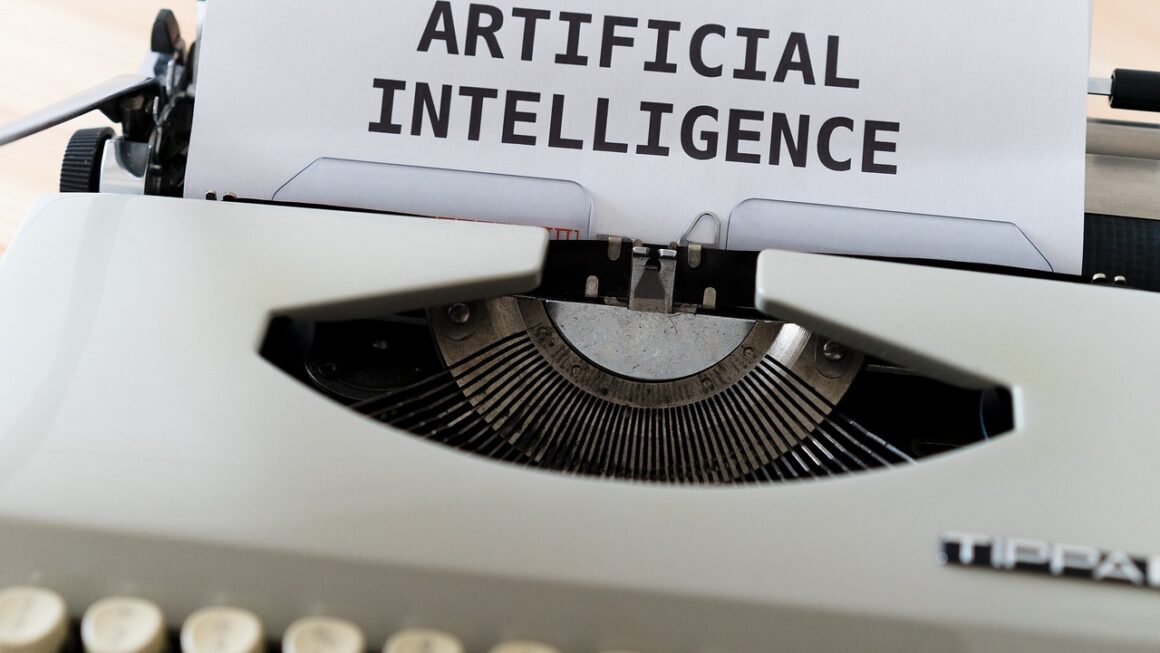Imagine a world where machines learn and adapt like humans, making decisions based on patterns and insights gleaned from vast amounts of data. That world isn’t a distant fantasy; it’s being built right now, brick by brick, with the powerful technology of neural networks. These sophisticated algorithms, inspired by the human brain, are revolutionizing fields from healthcare to finance, and even powering the apps you use every day. Dive in to discover the intricate world of neural networks and how they are shaping the future.
What are Neural Networks?
The Biological Inspiration
Neural networks, at their core, are computational models inspired by the structure and function of biological neural networks in the human brain. Just like our brains are composed of interconnected neurons that transmit signals, artificial neural networks are composed of artificial neurons, or nodes, that process and transmit information. These nodes are organized in layers, and the connections between them have weights that determine the strength of the signal being passed.
Architecture: Layers and Connections
A basic neural network consists of three main types of layers:
- Input Layer: Receives the initial data or features. The number of nodes in this layer corresponds to the number of input features.
- Hidden Layer(s): Perform complex calculations and transformations on the input data. A neural network can have multiple hidden layers, allowing it to learn more intricate patterns. Deeper networks (those with more hidden layers) are generally capable of learning more complex relationships but require more computational resources and data for training.
- Output Layer: Produces the final result or prediction. The number of nodes in this layer depends on the type of task the network is designed to solve (e.g., one node for binary classification, multiple nodes for multi-class classification).
These layers are connected by weighted connections. The weight represents the importance of that specific connection. During training, the network adjusts these weights to improve its accuracy.
How Neural Networks Learn: Training and Backpropagation
Neural networks learn through a process called training. During training, the network is fed with a large dataset of labeled examples (input data and the desired output). The network processes the input data, makes a prediction, and compares its prediction to the actual target. The difference between the prediction and the target is called the “loss”.
The network then uses an algorithm called backpropagation to adjust the weights of its connections. Backpropagation essentially calculates the gradient of the loss function with respect to the weights and updates the weights in the opposite direction of the gradient. This process is repeated iteratively over the entire training dataset until the network’s performance (i.e., its ability to make accurate predictions) reaches a satisfactory level.
- Epoch: One complete pass through the entire training dataset.
- Batch Size: The number of training examples used in one iteration of the training process. Smaller batch sizes can lead to more noisy updates but may escape local minima. Larger batch sizes provide more stable updates but require more memory.
- Learning Rate: Controls the size of the weight adjustments during each iteration. A high learning rate can lead to unstable training, while a low learning rate can make the training process slow.
Types of Neural Networks
The architecture and function of a neural network can vary widely depending on the specific task it’s designed to perform. Here are a few of the most common types:
Feedforward Neural Networks (FFNNs)
Also known as Multi-Layer Perceptrons (MLPs), FFNNs are the simplest type of neural network. Information flows in one direction, from the input layer to the output layer, through one or more hidden layers. They’re widely used for tasks like:
- Classification: Identifying the category to which an input belongs (e.g., image classification, spam detection).
- Regression: Predicting a continuous value (e.g., stock price prediction, house price prediction).
Convolutional Neural Networks (CNNs)
CNNs are specifically designed for processing grid-like data, such as images and videos. They use convolutional layers that apply filters to the input data to extract features. Pooling layers are often used to reduce the dimensionality of the data. CNNs excel at:
- Image Recognition: Identifying objects in images (e.g., identifying faces, cars, or animals).
- Object Detection: Locating objects within an image or video.
- Image Segmentation: Dividing an image into different regions or segments.
For example, a CNN might identify edges, corners, and textures in an image, and then combine these features to recognize more complex objects like faces or cars.
Recurrent Neural Networks (RNNs)
RNNs are designed to handle sequential data, where the order of the data points is important. They have recurrent connections that allow them to maintain a “memory” of past inputs. RNNs are particularly well-suited for:
- Natural Language Processing (NLP): Processing and understanding human language (e.g., machine translation, text summarization).
- Speech Recognition: Converting spoken language into text.
- Time Series Analysis: Predicting future values based on historical data (e.g., stock market forecasting, weather prediction).
A common type of RNN is the LSTM (Long Short-Term Memory) network, which is designed to address the vanishing gradient problem that can occur in standard RNNs.
Generative Adversarial Networks (GANs)
GANs are a type of neural network architecture consisting of two networks: a generator and a discriminator. The generator creates new data instances, while the discriminator evaluates the authenticity of these instances. The two networks are trained adversarially, with the generator trying to fool the discriminator and the discriminator trying to distinguish between real and generated data. GANs are used for:
- Image Generation: Creating realistic-looking images (e.g., generating faces, landscapes, or product designs).
- Data Augmentation: Expanding existing datasets by creating synthetic data.
- Style Transfer: Applying the style of one image to another.
Applications of Neural Networks
Neural networks are transforming a wide range of industries. Here are just a few examples:
Healthcare
- Diagnosis: Assisting doctors in diagnosing diseases based on medical images and patient data. For example, neural networks can be trained to detect cancer cells in mammograms with high accuracy.
- Drug Discovery: Accelerating the process of identifying and developing new drugs. Neural networks can predict the efficacy and toxicity of drug candidates, reducing the need for expensive and time-consuming laboratory experiments.
- Personalized Medicine: Tailoring treatment plans to individual patients based on their genetic makeup and medical history.
Finance
- Fraud Detection: Identifying fraudulent transactions and preventing financial losses.
- Algorithmic Trading: Automating trading strategies based on market data and patterns.
- Credit Scoring: Assessing the creditworthiness of loan applicants.
Automotive
- Self-Driving Cars: Enabling vehicles to navigate roads and avoid obstacles without human intervention.
- Advanced Driver-Assistance Systems (ADAS): Providing features such as lane departure warning, adaptive cruise control, and automatic emergency braking.
Retail
- Personalized Recommendations: Recommending products to customers based on their past purchases and browsing history.
- Inventory Management: Optimizing inventory levels to meet demand and minimize costs.
- Customer Service Chatbots: Providing automated customer support through online chat.
The market size for neural networks is expected to continue to grow rapidly in the coming years, driven by the increasing availability of data and the development of more powerful algorithms. According to a report by Grand View Research, the global neural network market size was valued at USD 11.35 billion in 2021 and is projected to reach USD 71.95 billion by 2030, growing at a CAGR of 22.7% from 2022 to 2030.
Building and Training Neural Networks
Choosing the Right Framework
Several software frameworks are available for building and training neural networks. Some of the most popular include:
- TensorFlow: An open-source library developed by Google, known for its flexibility and scalability.
- PyTorch: An open-source library developed by Facebook, known for its ease of use and dynamic computation graph.
- Keras: A high-level API that runs on top of TensorFlow or other backends, making it easier to build and train neural networks.
The choice of framework depends on your specific needs and preferences. TensorFlow is a good choice for large-scale deployments, while PyTorch is often preferred for research and rapid prototyping.
Data Preprocessing and Feature Engineering
Before training a neural network, it’s important to preprocess the data and engineer relevant features. This can involve:
- Data Cleaning: Removing or correcting errors and inconsistencies in the data.
- Data Normalization: Scaling the data to a common range (e.g., 0 to 1) to prevent features with large values from dominating the training process.
- Feature Selection: Selecting the most relevant features to improve the accuracy and efficiency of the network.
- Feature Engineering: Creating new features from existing ones to improve the network’s ability to learn patterns in the data.
Hyperparameter Tuning
Hyperparameters are parameters that are not learned by the network during training, but rather set by the user. Examples of hyperparameters include the learning rate, batch size, number of hidden layers, and number of nodes in each layer.
Tuning hyperparameters is a crucial step in optimizing the performance of a neural network. This can be done manually through trial and error, or automatically using techniques such as grid search, random search, or Bayesian optimization.
- Grid Search: Testing all possible combinations of hyperparameter values.
- Random Search: Randomly sampling hyperparameter values.
- Bayesian Optimization: Using a probabilistic model to guide the search for optimal hyperparameter values.
Conclusion
Neural networks have revolutionized the field of artificial intelligence, enabling machines to perform tasks that were once thought to be impossible. From image recognition to natural language processing, neural networks are powering a wide range of applications across various industries. As the technology continues to evolve, we can expect to see even more innovative and impactful applications of neural networks in the years to come. By understanding the fundamentals of neural networks, their different types, and their real-world applications, you’re well-equipped to navigate this exciting and rapidly growing field. Embrace the potential of neural networks and explore how they can transform your own projects and industry.




